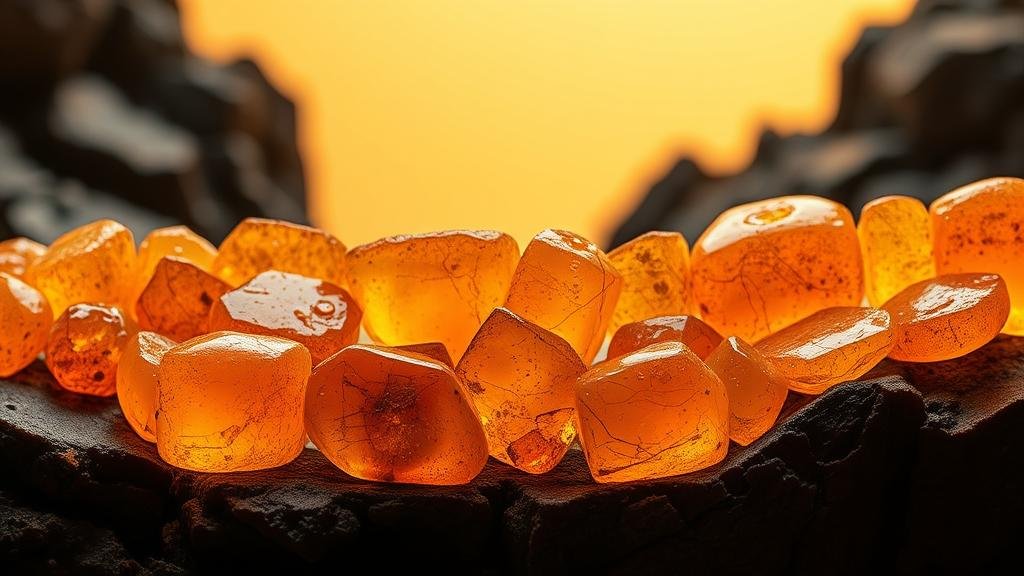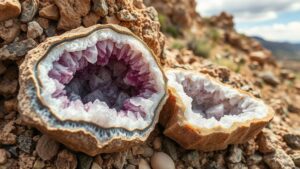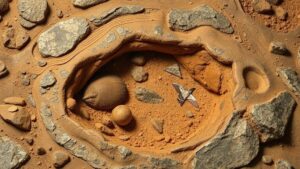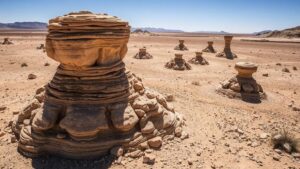Amber Roads: Rediscovering Ancient Trade Routes for Fossilized Resin
Amber Roads: Rediscovering Ancient Trade Routes for Fossilized Resin
Amber has captivated collectors, researchers, and jewelers for millennia with its beauty and historical significance. This resin, fossilized over millions of years, often contains ancient inclusions, making it a prized specimen for rockhounds and mineral collectors. The Amber Roads, a term referring to the ancient trade routes that facilitated the movement of amber, are gaining renewed interest as collectors seek not only the resin itself but also the rich history surrounding it.
The Historical Significance of Amber
Amber has been an essential material in trade since the Stone Age. Archaeological findings indicate that its trade routes connected regions from the Baltic Sea to the Mediterranean. The most famous of these is the Amber Road, which was integral in transporting amber from present-day Poland, Lithuania, and Russia to Athens and Rome. By the late Bronze Age, it was already a highly valued commodity sought after for decorative purposes and as a status symbol.
Significant studies, like those from the University of Tartu, suggest the Amber Road facilitated not just trade of goods but also cultural exchanges, impacting art and commerce. global demand for amber has not waned; according to industry estimates, the global amber market is valued at approximately $1 billion annually.
Amber can be classified into several types based on its source and characteristics. Here are some notable types:
- Baltic Amber: Predominantly found in the Baltic Sea region, this amber is known for its rich color variations and inclusions. Historically, it constituted about 80% of the global amber market.
- Dominican Amber: Found in the Caribbean region, Dominican amber is appreciated for its clarity and the presence of unique inclusions such as insects and plant material.
- Burma Amber: Sourced from Myanmar, this amber is known for its distinctive colors, typically deep red, orange, and yellow.
Understanding the Geology of Amber Formation
Amber is formed from the resin of ancient trees, primarily conifers, which lived during the Cretaceous period (approximately 145 to 66 million years ago). process involves several geological transformations:
- Resin Exudation: Trees produce resin as a defense mechanism against pests and injury.
- Burial: Over time, this resin becomes buried by sediment, leading to increasing pressure and temperature, promoting polymerization.
- Fossilization: After millions of years, the resin fossilizes into amber, preserving various inclusions including insects, plants, and even air bubbles.
Scientific data shows that the density of amber varies between 0.96 – 1.1 g/cm³, which allows it to float in saltwater, contributing to its widespread dispersal during ancient trade.
Practical Tips for Collectors
For rockhounds and mineral collectors, acquiring amber can be a rewarding experience. Here are some practical tips to guide your acquisition and ensure youre gathering authentic specimens:
- Research Locations: Investigate areas known for commercial amber sales, such as the Baltic States or the Dominican Republic.
- Verify Authenticity: Use the saltwater test – authentic amber will float in saltwater, while plastic replicas will not.
- Check for Inclusions: Visual examination can reveal important inclusions. Clear specimens often sell for a premium due to the fascinating specimens preserved within.
- Join a Community: Participate in forums or local rockhounding clubs to share knowledge and resources regarding amber collection.
Conclusion: The Journey Awaits
Rediscovering Amber Roads presents an exciting opportunity for collectors. Combating misinformation and replicas in todays market requires diligence, passion, and knowledge. Remember, every piece of amber has a story to tell, tracing back to ancient forests and bustling trade routes.
As you embark on your amber collection journey, consider the broader implications of your findings, not just their aesthetic appeal but their touchpoints with history and archaeology. Equip yourself with knowledge, connect with fellow enthusiasts, and let the ancient beauty of amber inspire your exploration.



